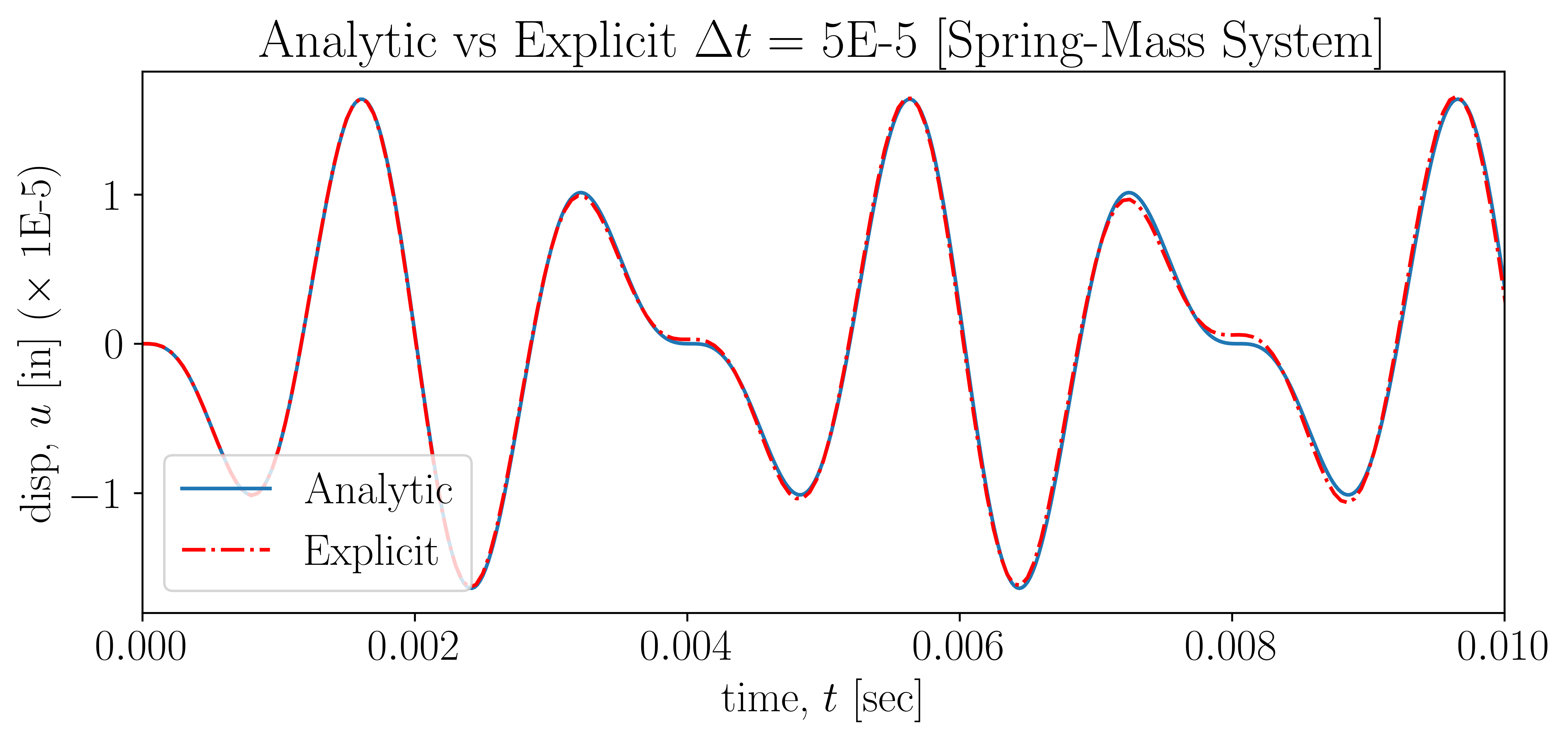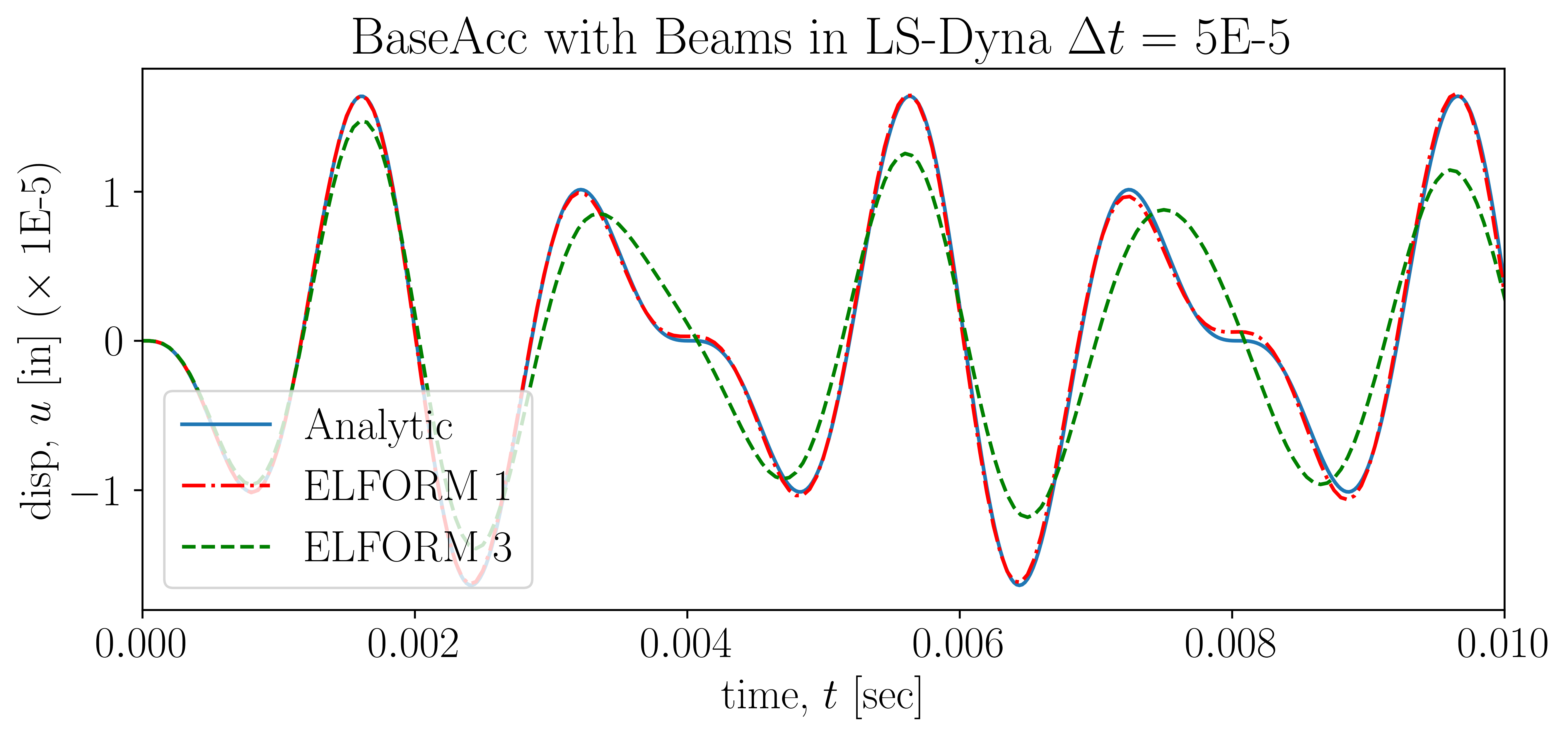TAGGED: explicit_dynamic
-
-
April 11, 2023 at 4:45 pm
Tonmoy
Subscriber -
April 11, 2023 at 5:46 pm
Andreas Koutras
Ansys EmployeeHello, since with reducing the explicit time step the model converged to analytical solution, I don't think there is an issue.
For implicit analysis see:
https://www.dynasupport.com/howtos/implicit/implicit-checklist
ABSTOL =1e-20 is recommended to prevent premature convergence.
-
April 11, 2023 at 6:14 pm
Tonmoy
SubscriberThank you for your reply Dr. Koutras. I will work to fix the implicit then.
I have two more questions about the problem:
- the analysis did not “perfectly” overlapped even using 1/20*T. Should I also consider that as “okay”?
- When should I use the keyword deck *BOUNDARY_PRESCRIBED_MOTION rather than *LOAD_BODY_X? As in my small experience, I have seen that using the former deck (setting VAD=1) the whole system moves away from the initial coordinates, so I get a response which increases as the time increases.
-
-
April 11, 2023 at 6:27 pm
Andreas Koutras
Ansys EmployeeHello,
Please try also with beam elements of ELFORM 1 and 3.
*BOUNDARY_PRESCRIBED_MOTION with VAD=1 will prescribe the acceleration at the node. You will need to prescribe the acceleration only at the node of the base (node 1). The total result at node 2 will be (motion at the base) + (motion at node 2 relative to the base).
LOAD_BODY applies the inertia force due to the base acceleration. In this case, node 1 should be fixed. The response at node 2 will be the motion relative to the base. To simulate the response due to base acceleration, we usually use this approach.
-
April 11, 2023 at 7:07 pm
Tonmoy
SubscriberDear Dr. Koutras,
I really appreciate your insightful comments.
I tried the keyword deck *ELEMENT_BEAM and *SECTION_BEAM (setting ELFORM 1 and 3) before. For both of them, the results are presented below:
(as we can see, there are still small difference, like before, between the Hughes-Liu and the analytical solution, whereas the story is very much different for the truss element)!!!
At that time, it confused our team a lot, especially because the CFL limit was not satisfied and the output from LS-Dyna was very jagged compared to the analytical solution (you can see my conversation about troubleshooting it with Dr. Basu here: /forum/forums/topic/applying-base-acceleration-in-ls-dyna/).
-
-
April 11, 2023 at 7:12 pm
Andreas Koutras
Ansys EmployeeI believe the truss element has damping added by default in the code which cannot be deactivated. Anyway, the result of ELFORM=1 and the spring element seems acceptable. Reducing the time step size further may lead to a better match. Thank you.
-
April 11, 2023 at 10:52 pm
Tonmoy
SubscriberDr. Koutras,
Thanks a lot for helping me understand the problem better.
-
-
- The topic ‘Application of base acceleration to a spring-mass system’ is closed to new replies.



-
4217
-
1493
-
1375
-
1197
-
1021

© 2025 Copyright ANSYS, Inc. All rights reserved.









